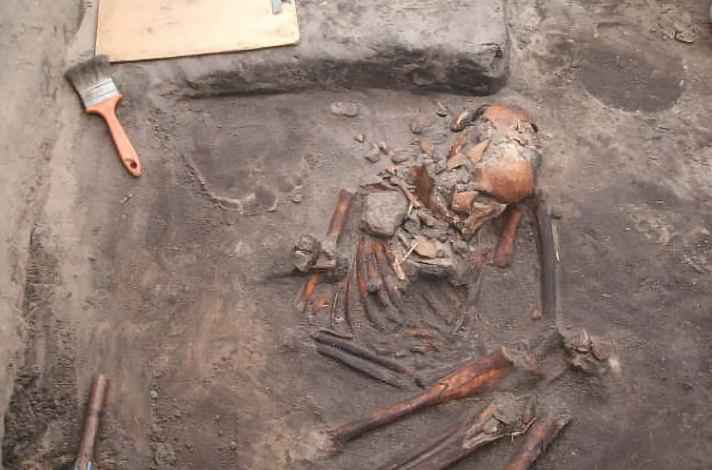New archaeological finds are rewriting the ancient history of Brazil

Research at an archaeological site near Laguna calls into question the hypothesis that the ancestors of the Southern Jay displaced communities that built shell and barrows (sambaquis) along the coast of Santa Catarina state for more than 5,000 years.
Brazilian researchers have revisited the history of ancient sambaqui builders in Santa Catarina, showing that they were not replaced by the ancestors of the Southern Je, contrary to previous beliefs, and shedding new light on their culture and interactions.
Researchers from the Museum of Archeology and Ethnology of the University of São Paulo (MAE-USP), supported by FAPESP, are revisiting an important chapter in the history of human settlements along the Brazilian coast.
In an article published in the journal PLOS ONE, the group, which also includes researchers from the state of Santa Catarina, South Brazil, and other countries (the United States, Belgium, and France), shows that the builders of the sambaqui Galeta IV, archaeological in Laguna (Santa Catarina ), were not replaced by the ancestors of the southern Je, as previously believed.
As the article explains, the sambacs are middens that are “evidence of long-term occupation”. They consist of mounds with layers of mollusc fragments, human and animal bones, remains of plants and hearths, stone or bone utensils, and other debris. They were used for burial and shelter, as well as for delimiting the territory.
“There was much less interaction between these middle builders [sambaquieiros] and the proto-Je population, as we call them, than had been thought.Their funeral customs and pottery were different. In addition, the Sambaqueiros lived there from birth and were descendants of people who lived there,” says Andre Strauss, professor at MAE-USP and penultimate author of the paper.
The theory that one ethnic group replaced another arose in part because sites like Galeta IV mark the end of sambaki construction. The sherds found in the most recent mound layers at these sites resemble the pottery of the ancestors of the southern Je, Kaingang, and Laklano-Xokleng indigenous groups. This is another reason for the old belief, now disproved, that the sambaqui builders who lived on the coast were replaced by people from the Santa Catarina highlands.
“We don't know why the construction of the sambaqui stopped. Possible explanations include contact with other cultures and environmental factors such as changes in sea level and salinity, which may have led to a drop in shellfish stocks and thus the raw material for mussel mounds," says Jessica Mendez Cardoso, first author of the study. article. The study was conducted during the preparation of a doctoral thesis at MAE-USP and the University of Toulouse in France.
Cardoso reanalyzed the material collected by another team at MAE-USP and the Heritage and Archeology Research Group (GRUPEP) at the University of Southern Santa Catarina (UNISUL) between 2005 and 2007, when the skeletons of four people were exhumed. In doing so, she quantified isotopes of strontium, carbon and nitrogen, determining that fish and other seafood made up 60% of the group's diet. Analysis of the bones also showed that the individuals were not buried after cremation, a funerary practice used by the Southern Proto-Je.
She also analyzed faunal remains (parts of animals in the material record), especially fish, which are common in sambacs. Unlike other sites, it also contained bones of seabirds such as albatrosses and penguins, and bones of mammals such as fur seals.
“These animals were not part of their daily diet, but were consumed seasonally during migration or perhaps kept locally. They were probably part of their funeral rites, as no one lived in the place. This place was a burial ground,” says Cardozo. In one burial ground, for example, there were 12 albatrosses.
New dates have shown that the site is older than previously thought, suggesting it was built and visited between 1,300 and 500 years ago. The previous estimate was 1170-900 years ago.
Analysis of pottery found at the archaeological site also suggests that the proto-Je may have been merely a cultural influence of the sambaki builders. Of the 190 sherds found there, 131 were large enough to be examined and analyzed.
"The pottery is very different from that found in the Santa Catarina Highlands in terms of form and decoration, but similar to that found elsewhere on the coast both north and south of the state, suggesting that these the items could well have been transported from one coastal location to another. These are the oldest pottery remains found in the state, dating back 1,300 years, while the pottery found on the highlands is about 1,000 years old,” says Fabiana Merencio, second author of the paper. During her studies, she was a PhD student at MAE-USP with a FAPESP scholarship. She is currently a PhD student at the Federal University of Santa Catarina (UFSC).
“We are uncovering a new expression of human materiality on the coast, around 1,000 years ago, in the form of sambaki replacement sites without mollusk shells but with pottery. This site is the Rosetta Stone that helps us understand these connections,” says Strauss.